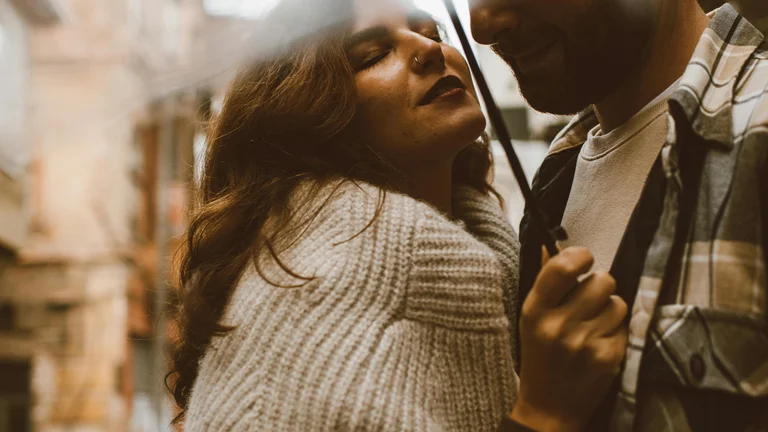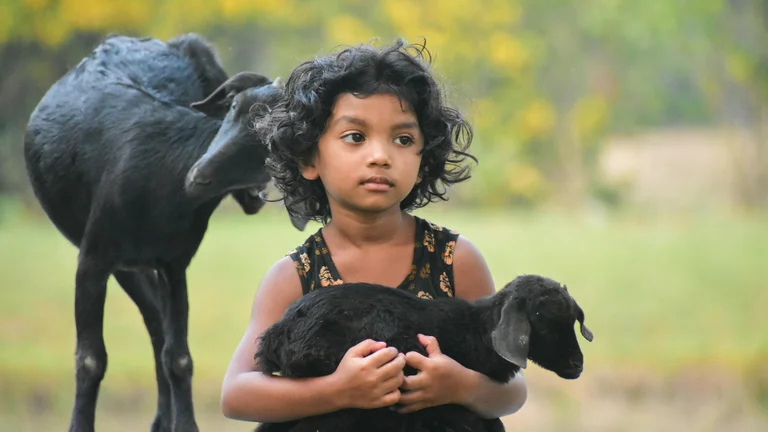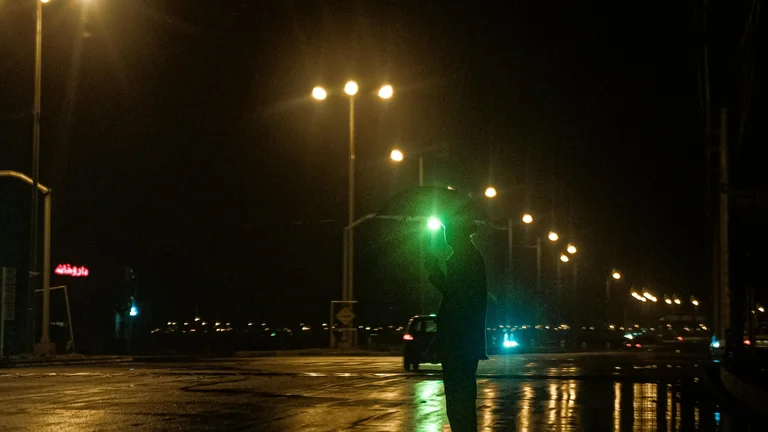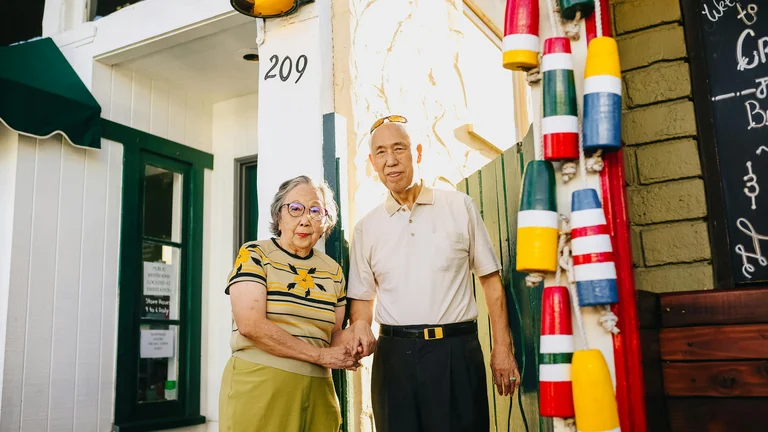Introduction to the Charm of Shared Umbrella Scenes in K-Dramas

Shared umbrella scenes have become iconic and deeply beloved in the realm of Korean dramas (K-Dramas). These moments, simple on the surface, often resonate with viewers because they encapsulate intimacy, vulnerability, and tender connection between characters. When two individuals share a single umbrella under a rain shower, it presents a metaphor for unity—protection from the outside world, an involuntary closeness, and sometimes even a foreshadowing of growing affection. K-Drama creators utilize these scenes with meticulous attention to detail, emotional timing, and subtle gestures to craft scenes that linger in the audience’s minds long after the episode ends.
Rain, often considered a cleansing or symbolic device in storytelling, introduces a setting that fosters organic interaction. Characters, who might otherwise be distant or conflicted, find themselves physically united beneath the limited space of one umbrella. This situation demands physical proximity and creates an intimate bubble that cuts off distractions. Such proximity generates opportunities for non-verbal communication—shy glances, soft smiles, or protective touches—that dialogue alone might struggle to convey.
Moreover, in Korean culture, sharing an umbrella is often viewed as a sign of warmth and care, especially between developing couples or close acquaintances. It is not just a practical act but a gesture loaded with emotional subtext. For these reasons, shared umbrella scenes have become a recurring motif that fans eagerly anticipate in K-Dramas, symbolizing a turning point or deepening relationship trajectory.
Iconic K-Drama Shared Umbrella Scenes that Captivated Fans
Among hundreds of K-Dramas, several shared umbrella scenes stand out for their authenticity, emotional weight, and cinematographic beauty. They showcase the subtle art of perfecting a moment that feels spontaneous yet carefully orchestrated. Here are some of the most memorable shared umbrella scenes and the reasons they resonate so well.
One notable example is from the drama Goblin (Guardian: The Lonely and Great God). The main characters, Kim Shin and Ji Eun-tak, share an umbrella during a sudden rainstorm. This scene carries magical realism, amplified by intimate camera angles focusing on the falling raindrops and their exchanged looks. The shared umbrella becomes a sacred space for their blossoming love, blending fantasy with emotion.
Another beloved instance is in Crash Landing on You, where Ri Jeong-hyeok and Yoon Se-ri find themselves under the same umbrella during a rain interruption at the border area. The scene is layered with tension and subtle humor, highlighting their contrasting backgrounds but undeniable chemistry. As the camera switches between wide shots of the storm and close-ups of their expressions, it captures a moment of fleeting peace amid turmoil.
Further, the drama Weightlifting Fairy Kim Bok-joo features a particularly heartwarming shared umbrella moment between Kim Bok-joo and Jung Joon-hyung. Their vulnerability shines through the delicate way he shields her from the rain, exhibiting a protective instinct without overwhelming her space. The simplicity of the moment underscores the authenticity of young love and the natural progression from friendship to romance.
The Emotional Dynamics Behind Shared Umbrella Scenes
To understand why shared umbrella scenes in K-Dramas evoke such strong emotional responses, it is important to analyze the underlying dynamics at play. At its core, sharing an umbrella forces characters into physical closeness, which often mirrors emotional closeness or the opportunity for it. Unlike other romantic settings—beaches, cafés, or moonlit nights—rain creates unpredictability and urgency, which intensify feelings.
This forced proximity highlights contrasts and complements between characters. Whether they are shy, awkward, or confident, the umbrella scene acts as a stage where unspoken thoughts become amplified. A hand brushing against another, exchanging looks that linger, or a sudden chuckle breaking the silence can communicate volumes. The sheltered space under the umbrella often becomes a metaphorical sanctuary, separate from societal conventions or external pressures, allowing characters to be more authentic.
Furthermore, rain itself adds an atmospheric layer that stimulates senses beyond sight and sound. The pattering drops, damp scents, and cool air help the viewer feel immersed in the moment. Rain also symbolizes renewal and cleansing culturally, hinting at fresh starts or emotional catharsis. Together, these elements create a sensory and symbolic cocktail that enriches the scene’s impact.
Technical Aspects: How Directors Craft Unforgettable Shared Umbrella Scenes
Creating a memorable shared umbrella scene involves careful directorial choices that manipulate visuals, sound, pacing, and actors’ performances. Lighting plays a crucial role—soft, diffused lighting mimics natural rain ambiance and enhances skin tones, fostering warmth despite the cold setting. Camera angles frequently focus on close-ups of faces, hands, or the umbrella dome to intensify intimacy.
Directors often use slow-motion sequences or lowered frame rates during pivotal umbrella moments to draw attention to delicate gestures and expressions that would typically go unnoticed. Music selection heightens emotions without overwhelming the scene. Subtle instrumental scores or gentle piano melodies align perfectly with the mood of the shared shelter from rain.
Additionally, blocking and positioning are carefully choreographed. The actors’ positions under the umbrella reflect the dynamics of their relationship. Who holds the umbrella? Who pulls closer? How do their bodies orient towards each other? These decisions communicate subtext. Smaller umbrellas yield tighter proximity and heightened tension, while larger umbrellas can create more relaxed feelings.
Table: Comparison of Shared Umbrella Scenes Across Popular K-Dramas
| Drama | Characters | Emotional Tone | Setting | Symbolism Focus | Unique Feature |
|---|---|---|---|---|---|
| Goblin | Kim Shin & Ji Eun-tak | Magical, Romantic | Enchanted Rain | Fate, Eternal Bond | Use of fantasy elements and visual effects |
| Crash Landing on You | Ri Jeong-hyeok & Yoon Se-ri | Tense, Humorous | Border Rainstorm | Contrast of worlds, Trust | Mix of political tension and romance |
| Weightlifting Fairy Kim Bok-joo | Kim Bok-joo & Jung Joon-hyung | Sweet, Innocent | Campus Rain | Youthful Love, Protection | Simplicity emphasizing natural chemistry |
| My Love from the Star | Do Min-joon & Cheon Song-yi | Mysterious, Tender | Urban Rain | Supernatural & Human Connection | Mix of sci-fi and romance vibes |
| It's Okay to Not Be Okay | Moon Gang-tae & Ko Moon-young | Healing, Complex | Countryside Rain | Emotional Growth, Vulnerability | Psychological depth accentuated by rain |
How Shared Umbrella Scenes Reflect Cultural and Social Nuances in Korea
Beyond romance, the shared umbrella is a cultural artifact that carries social significance in Korea. Traditionally, sharing an umbrella is a sign of warm regard and respect. It displays attentiveness and willingness to offer comfort amid inclement weather. This act symbolizes a nurturing gesture that reflects collectivist values deeply ingrained in Korean society, where interpersonal harmony and care hold high priority.
Moreover, the size and color of was chosen for the umbrella act as subtle communicators within the scenes. Bright or transparent umbrellas often denote innocence or openness, while darker umbrellas can emphasize privacy or restraint. In some dramas, umbrellas serve as visual motifs connected to character arcs or developments. For instance, breaking or losing an umbrella can signal separation or challenges ahead, whereas sharing an umbrella signifies restoration or coming together.
Social hierarchy also emerges as an underlying theme in many of these scenes. Since Korean society respects age and titles, the act of offering one’s umbrella to someone else, especially between strangers or acquaintances, contains a nuanced politeness and power dynamic. In romantic contexts, the person holding the umbrella might intentionally be framed as the protector or supporter, subtly shaping perceived gender roles or relational dynamics.
Step-by-Step Guide to Creating Your Own Romantic Shared Umbrella Scene Inspired by K-Dramas
For aspiring creators or fans who want to capture the essence of a shared umbrella scene, breaking down the components helps achieve that authentic and emotive effect. Here is a detailed guide outlining practical steps to bring such a scene to life:
- Choose the Setting Carefully: Select a location that naturally supports rain—outdoor spaces with evocative lighting, such as evening streets, parks, or campus grounds. The environment should enhance the mood without distraction.
- Define Emotional Context: Decide what relationship the characters share and what emotion you want to convey—nervous attraction, reconciliation, or quiet protection. This guides facial expressions and body language.
- Select the Umbrella: Pick an umbrella size and color that match the tone. Transparent umbrellas offer softness and vulnerability; dark umbrellas convey seriousness and intimacy.
- Plan Blocking and Positioning: Map how characters move into the frame and interact under the umbrella. Consider who holds it, how close they stand, and when subtle touches occur.
- Integrate Sound and Music: Use natural rain sounds combined with understated instrumental music that aligns with mood shifts—build tension or relaxation appropriately.
- Use Camera Techniques: Employ close-ups on facial expressions and details like hands or heads inching together. Slow-motion or slightly lowered frame rates can emphasize emotion.
- Encourage Actor Authenticity: Allow actors to embrace natural reactions to proximity, including blushing, nervous laughter, or contemplative silence.
- Create Symbolic Gestures: Insert small meaningful acts, like wiping raindrops off the other's face, adjusting hair, or tightening umbrella coverage selectively to enhance intimacy.
- Consider Weather Effects: Ensure rain intensity matches scene tone. Too heavy may overwhelm; a gentle drizzle can feel more romantic.
- Edit for Pacing: Trim for smooth flow that maintains tension without dragging. Emotional beats should breathe within the scene.
Following these detailed steps can help storytellers evoke the same feelings that make K-Drama shared umbrella scenes so enduring, striking a balance between romance, realism, and cultural resonance.
List of Key Elements in Successful Shared Umbrella Scenes
- Forced physical proximity: Being under one umbrella necessitates closeness, enhancing emotional tension.
- Protective behavior: One character usually assumes the role of guardian, offering shelter from rain, conveying care.
- Visual intimacy: Use of close-ups on eyes, hands, and subtle gestures to express feelings.
- Atmospheric conditions: Rain adds texture, symbolism, and mood depth, enriching the scene.
- Non-verbal communication: Shared silence, glances, and body language carry emotional weight.
- Cultural symbolism: Umbrella sharing reflects warmth, trust, and social nuances unique to Korean culture.
- Sound and music: Complementary rain sounds and soft melodies heighten immersion and emotional impact.
- Cinematic techniques: Strategic lighting, framing, and pacing amplify intimacy and drama.
Understanding Audience Reception and Emotional Impact
The reception of shared umbrella scenes among global audiences reflects a universal appreciation for moments of tenderness amidst adversity. Viewers report these scenes as heartwarming and memorable, oftentimes citing their favorite umbrella moments as peak emotional points in a series. This demonstrates the power of small gestures and settings in storytelling. The umbrella, a simple object, becomes a vessel for universal human experiences—connection, care, and hope.
From an analytical standpoint, these scenes offer several psychological hooks. The physical closeness induces mirror neuron activation, eliciting empathy from viewers. The vulnerability shown by characters in the rain triggers protective instincts among the audience, fostering deeper engagement. Additionally, the unpredictability of rain serves as a natural plot device to disrupt routine interactions and create moments ripe for emotional breakthroughs.
Fan communities often create montages, fan art, and write extensive analyses focused on shared umbrella scenes, further cementing their cultural impact. Social media hashtags about umbrella moments regularly trend during airing periods, signifying collective affection and shared emotional experiences. This robust fan response also indicates K-Dramas’ skillful use of relatable, visually symbolic moments that transcend language and culture.
Table: Emotional Themes and Corresponding Shared Umbrella Scenes
| Emotional Theme | Specific K-Drama Scene | Character Dynamics | Symbolic Meaning |
|---|---|---|---|
| Protection and Care | Weightlifting Fairy Kim Bok-joo & Jung Joon-hyung shared umbrella scene | Friendship evolving into love | The umbrella symbolizes safety and nurturing |
| Fate and Destiny | Goblin’s Kim Shin & Ji Eun-tak rain scene | Predestined love | Umbrella signifies an eternal bond shielding from hardships |
| Trust and Breaking Barriers | Crash Landing on You, border rain umbrella moment | Enemies to lovers, overcoming political and personal divides | The umbrella as a bridge across divides |
| Healing and Vulnerability | It's Okay to Not Be Okay, countryside rain scene | Emotional healing between guarded characters | The umbrella is a safe space for growth |
Exploration of Variations and Creative Twists on the Shared Umbrella Trope
Although the core concept remains consistent, K-Dramas often introduce creative reinterpretations of shared umbrella scenes to avoid repetition and keep the motif fresh. Some dramas employ symbolic props in addition to the umbrella, such as scarves or shared raincoats, to heighten emotional stakes or integrate humor. In certain cases, the umbrella collapses or breaks, signaling relationship obstacles or moments of crisis.
Another variation includes conflicting weather conditions—scenes where rain abruptly stops or umbrellas are swapped unexpectedly highlight changes in character emotions or relationship statuses. Sometimes, comedic mishaps occur where several characters crowd under one oversized umbrella, blending romance with lighthearted moments. This variation adds layers of group dynamics and camaraderie.
Technology integration is a newer twist where characters share digital umbrellas in virtual spaces, symbolizing attempts at connection despite physical distance—a reflection of how modern romance adapts in digital times. Even rainless scenes mimicking umbrella sharing via improvised covers like newspapers or hands can evoke similar feelings of closeness and protection, extending the trope’s versatility.
Practical Applications: Why Fans and Creators Value Shared Umbrella Scenes
From a fandom perspective, shared umbrella scenes offer visually iconic moments perfect for memorable screenshots, GIFs, and fan discussions. These scenes serve as emotional anchor points in the story, often driving fan theories and expectations about character development and fate. Cosplay and reenactments replicate these moments to relive or reinterpret favorite scenes, showcasing their cultural penetration.
For creators, these umbrella moments act as cost-effective but highly effective devices to elevate emotional intensity without grandiose effects. They condense complex emotions into concise, potent scenes that advance the relationship arc smoothly. Umbrella scenes are versatile tools adaptable across genres—romantic comedies, melodramas, fantasy, and mystery—all of which benefit from the intimate setting.
The evergreen appeal ensures that writers and directors continue to innovate around this motif to keep audience engagement high. Well-executed shared umbrella scenes contribute to K-Dramas’ reputation for heartfelt storytelling and sophisticated use of visual symbolism, setting industry standards.
List: Tips for Viewers to Fully Appreciate Shared Umbrella Scenes
- Notice small details like hand movements, glances, and pauses—the unspoken often tells the story.
- Pay attention to ambient sounds and musical cues that accompany the rain to understand mood shifts.
- Consider cultural context and symbolism to grasp deeper meanings behind the gesture of sharing an umbrella.
- Observe camera angles and lighting, which enhance the emotional tone.
- Reflect on character backgrounds and relationship arcs prior to the scene for richer interpretation.
- Engage with fan discussions and analyses to gain diverse perspectives.
Statistical Insight on Shared Umbrella Scenes in K-Dramas
A recent informal survey conducted among K-Drama fans across multiple platforms revealed that approximately 68% of respondents rated shared umbrella scenes as some of their most memorable romantic moments. Additionally, 74% agreed that these scenes significantly increased their emotional investment in a drama’s storyline. Social media analytics indicate spikes in mentions of "umbrella" during drama broadcasts, highlighting their popularity.
Streaming platforms also report higher engagement rates for episodes featuring such scenes, with average watch times increasing by up to 20% compared to other episodes without similar iconic moments. These trends underscore the importance of shared umbrella sequences as pivotal narrative and visual tools that resonate broadly with audiences.
The preference for umbrella scenes cuts across demographic lines, indicating a universal appeal rooted in human emotions rather than cultural specificity alone. However, deeper examination reveals that viewers familiar with Korean cultural etiquette around umbrellas and rain may perceive additional layers of meaning, enhancing their viewing experience.
Final Thoughts on the Enduring Popularity of Shared Umbrella Scenes
The shared umbrella scene, simple in concept but rich in meaning, stands as a quintessential element in K-Drama storytelling. Its power lies in evoking intimacy through a universal gesture of protection against the rain. This motif’s versatility, cultural relevance, and emotional depth provide fertile ground for creative expression and audience connection.
As K-Dramas continue to captivate viewers worldwide, shared umbrella scenes remain symbolic anchors that embody love, vulnerability, and human connection. They offer a quiet but profound sanctuary amidst narrative complexities, reminding viewers that sometimes, protection and closeness can come from something as modest as sharing an umbrella on a rainy day.
FAQ - Cutest K-Drama Scenes with Shared Umbrellas
Why are shared umbrella scenes so popular in K-Dramas?
Shared umbrella scenes symbolize intimacy, protection, and emotional closeness. They create physical proximity that naturally enhances romantic tension and offer a visually compelling metaphor for love and care amid adversity, resonating deeply with viewers.
Which K-Dramas feature the most iconic shared umbrella moments?
Some of the most iconic scenes appear in dramas like Goblin, Crash Landing on You, Weightlifting Fairy Kim Bok-joo, My Love from the Star, and It’s Okay to Not Be Okay, where umbrella sharing highlights turning points in the characters' relationships.
What cultural significance does sharing an umbrella have in Korea?
In Korean culture, sharing an umbrella is a gesture of warmth, respect, and care. It reflects collectivist social values and often implies protective or nurturing feelings, especially between couples or close acquaintances.
How do directors make shared umbrella scenes emotionally impactful?
Directors use lighting, close-up shots, natural rain sounds, soft music, actor blocking, and subtle gestures to amplify intimacy. Camera techniques such as slow-motion emphasize nuanced expressions and tender moments.
Can shared umbrella scenes be used in genres outside romance?
Yes, shared umbrella scenes appear in various genres, including fantasy, drama, and comedy, as they effectively convey emotional connection and vulnerability that transcend specific genre conventions.
Shared umbrella scenes in K-Dramas encapsulate intimacy and care, symbolizing emotional closeness through physical proximity during rain. These moments are crafted with cinematic precision, reflecting Korean cultural values and enriching storytelling, making them some of the most cherished and emotionally impactful scenes in the genre.
Shared umbrella scenes in K-Dramas represent a delicate intersection of cultural symbolism, emotional storytelling, and cinematic artistry. These moments remain deeply ingrained in viewers’ hearts due to their ability to visualize connection and protection with minimal elements. Their enduring popularity testifies to the universal power of simple gestures to convey complex human emotions, ensuring they continue to be a beloved staple in Korean drama narratives.






